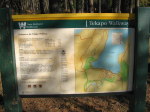It seems like we’ll be waiting some time for the camera that takes the view you saw and makes it into a picture on its own. On the way to this goal a number of problems turned up that were solved on the computer. Low dynamic range (high contrast) was improved by bracketing and enfusing; barrelling (radial distortion) by determining the Dersch coefficients (left) and applying a counter-distortion; and chromatic aberration by measuring sets of aberrations (below right) and remapping the colour channels so that they now matched each other. What we might also like to do is process RAW images, save copies of the originals, both as JPG and in a sturdier format such as PNG. And while we’re moving the formats around, taking care that the EXIF data gets transferred too, perhaps a little extra data could be included. Then some postprocessing like Advanced Tone Mapping. And finally, thumbnailing and sharpening so that the images can be experimented with. Oh dear, it seems like Christmas is rather early this year. Continue reading
Tag Archives: radial distortion
On the Fringe

Deck chair left and right: White stripes have a green fringe on the inside and purple on the outside due to chromatic aberration
Another problem that almost all lenses produce is chromatic aberration. Again van Walree has one of the better explanations. Whereas radial (barrel) distortion will interfere with panorama production because the images diverge very quickly from one another – thus making it necessary to have a sharp transition from one photograph to the next or risk having highly divergent control points, chromatic aberration will interfere with the identity of control points in highly contrasting areas. Consider the transition from white to black to white on the left hand side of an image: Continue reading
Battle of the Bulge
A common form of photographic distortion is barrel distortion and its counterpart pincushion. Straight lines such as architectural features become curved and this is distracting, not only for viewing buildings, but also in portraiture, where the barrel distortion will easily make you 5 or so kgs overweight. Photographers will compensate for this by using the zoom to reduce the amount of distortion (and this, as it turns out, is true, although not the whole story). Continue reading


